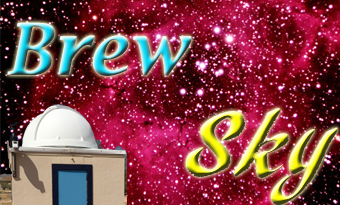| Common Name | Trifid Nebula | |||||||||||||||||||||||||||||||||||||||||||||
| Formal Name | M 20 / NGC 6514 | |||||||||||||||||||||||||||||||||||||||||||||
| Date | 5/18 - 5/22/2017 | |||||||||||||||||||||||||||||||||||||||||||||
| Constellation | Sagittarius | |||||||||||||||||||||||||||||||||||||||||||||
| Location | Brewsky Observatory, Casa Grande, AZ | |||||||||||||||||||||||||||||||||||||||||||||
| Equipment | Celestron Edge/11, SBig STF8300M, St-i Guider, Astrodon filters | |||||||||||||||||||||||||||||||||||||||||||||
| Temperature | -5°C | |||||||||||||||||||||||||||||||||||||||||||||
| Exposures |
|
|||||||||||||||||||||||||||||||||||||||||||||
| Processing | 2017: Calibrated in Maxim/DL Aligned, processed with PixInsight 2005: |
|||||||||||||||||||||||||||||||||||||||||||||
| Notes | The Trifid Nebula (catalogued as Messier 20 or M20 and as NGC 6514) is an H II region located in Sagittarius. It was discovered by Charles Messier on June 5, 1764. Its name means 'divided into three lobes'. The object is an unusual combination of an open cluster of stars; an emission nebula (the upper, red portion), a reflection nebula (the lower, blue portion) and a dark nebula (the apparent 'gaps' within the emission nebula that cause the trifurcated appearance; these are also designated Barnard 85). Viewed through a small telescope, the Trifid Nebula is a bright and peculiar object, and is thus a perennial favorite of amateur astronomers.
The Trifid Nebula is a star-forming region in the Scutum spiral arm of the Milky Way. The most massive star that has formed in this region is HD 164492A, an O7.5III star with a mass more than 20 times the mass of the Sun. This star is surrounded by a cluster of approximately 3100 young stars. |
=============================================================================
2005 Version
| Common Name | Trifid Nebula | |||||||||||||||||||||||||||||||||||||||||||||
| Formal Name | M 20 / NGC 6514 | |||||||||||||||||||||||||||||||||||||||||||||
| Date | 7/2/2005 | |||||||||||||||||||||||||||||||||||||||||||||
| Constellation | Sagittarius | |||||||||||||||||||||||||||||||||||||||||||||
| Location | Ionia, NY | |||||||||||||||||||||||||||||||||||||||||||||
| Equipment | Meade 12 Classic/f6.3, SBig 2000XM Camera/Filter Wheel/Astrodon filters, Optec focuser | |||||||||||||||||||||||||||||||||||||||||||||
| Temperature | -20°C | |||||||||||||||||||||||||||||||||||||||||||||
| Exposures |
|
|||||||||||||||||||||||||||||||||||||||||||||
| Processing | Calibrated in CCDSoft Aligned and averaged in RegiStar Combined in Images Plus Adjusted Levels and Curves in PixInsight Adjusted Levels/Curves, sharpened in Photoshop |
|||||||||||||||||||||||||||||||||||||||||||||
| Notes |

